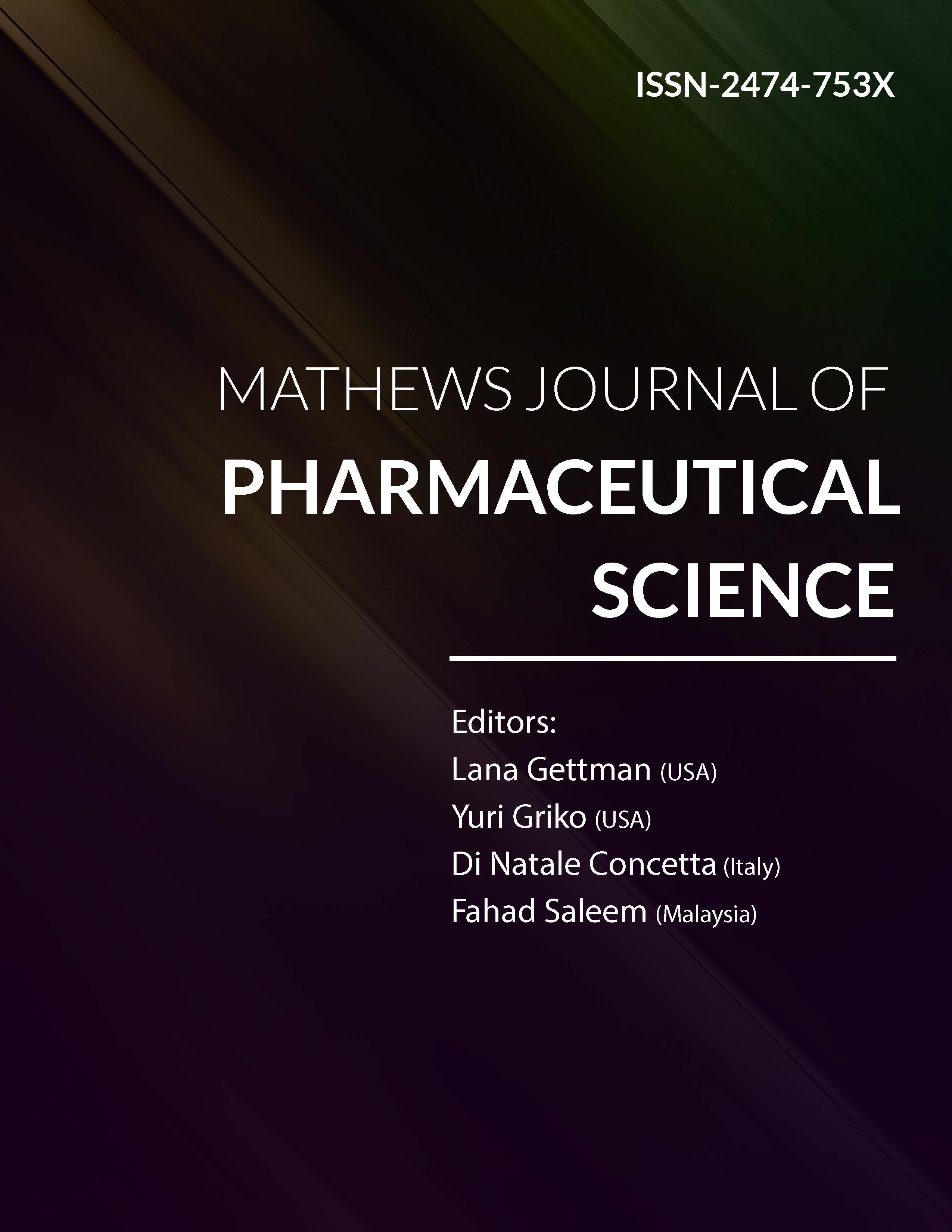
Information Links
Previous Issues Volume 8, Issue 3 - 2024
Preparation and In Vitro Evaluation of Ibuprofen Microspheres Using Ionic Gelation Method
Ezegbe Chekwube Andrew1,4,*, Mba Valentine Maduabuchi1, Ezegbe Amarachi Grace3,#, Anikwe Celestine Chidera2, Okafor Nnedimma Pauline1, Odo Kenechi Benjamin1, Onyia Oluebube Chisom1, Agu-Kalu Amarachi1, Anyoha Cross-Raphael Chukwuebuka1, Ugorji Anita Chidera1, Okorafor Ezinne Chinemerem5, Onunkwo Chukwunwike Godswill1
1Department of Pharmaceutical Technology and Industrial Pharmacy, University of Nigeria, Nsukka, Enugu, Nigeria
2Department of Clinical, Pharmaceutical and Biological Sciences, University of Hertfordshire, England, United Kingdom
3Department of Home Science and Management, University of Nigeria, Nsukka, Enugu State.
4Human and Natural Science Center, ABC Federal University, Santo Andre, Sao Paulo, Brazil
5Department of Pharmacology, Federal University of Technology, Owerri, Nigeria
*Corresponding author: Ezegbe Chekwube Andrew, Department of Pharmaceutical Technology and Industrial Pharmacy, University of Nigeria, Nsukka, Enugu, Nigeria & Federal University of ABC (UFABC), Center for Natural and Human Sciences, Santo Andre, Brazil, Tel: +2348038042802, Email: [email protected]
#Co-corresponding author: Ezegbe Amarachi Grace, Department of Home Science and Management, University of Nigeria, Nsukka, Enugu State, Nigeria, Tel: +2348061114433, E-mail: [email protected]
Received Date: July 18, 2024
Published Date: September 26, 2024
Citation: Andrew EC, et al. (2024). Preparation and In Vitro Evaluation of Ibuprofen Microspheres Using Ionic Gelation Method. Mathews J Pharma Sci. 8(3):35.
Copyrights: Andrew EC, et al. © (2024).
ABSTRACT
Introduction: Microspheres can be defined as a matrix system that allows the drug to be homogenously dispersed, dissolved or suspended. Aim: Development and in vitro evaluation of ibuprofen floating microspheres. Methods: The microspheres were formulated using inotropic gelation method. A homogenous polymer solution was prepared by dissolving sodium alginate (1 g) and the polymers (1 g each) in 32 ml of distilled water. The drug was added to the polymer solution and stirred continuously to form a viscous dispersion. A 10 % w/v Cacl2 solution was prepared and used as a cross–linking agent. The dispersion was added drop wise for 15 minutes for the curing reaction to take place. The spheres obtained were then washed and dried at 45 oC for 12 hours. Results: The percentage yield of the formulations ranged from 72.00 % ± 1.41 to 85.50 % ± 3.54. The angle of repose ranged from 3.49o ± 0.04 to 9.49o ± 0.31, while the bulk density ranged from 0.60 g/ml ± 0.00 to 0.41 g/ml ± 0.00. The Carr’s index ranged from 13.04 % ± 0.04 to 14.50 % ± 0.35. The swelling index ranged from 65.50 % ± 0.35 to 85.00 % ± 0.71. The in vitro drug release showed that formulation F-5 gave the least release at 28.80 % ± 0.85 after 4 hours without a significant difference (p < 0.05). Conclusion: The idea of formulating floating microspheres containing ibuprofen gave a suitable practical approach that achieved a prolonged therapeutic effect by releasing the active drug over an extended period of time.
Keywords: Ibuprofen, Ionic gelation, Microspheres, Gastrointestinal infection, Floating.